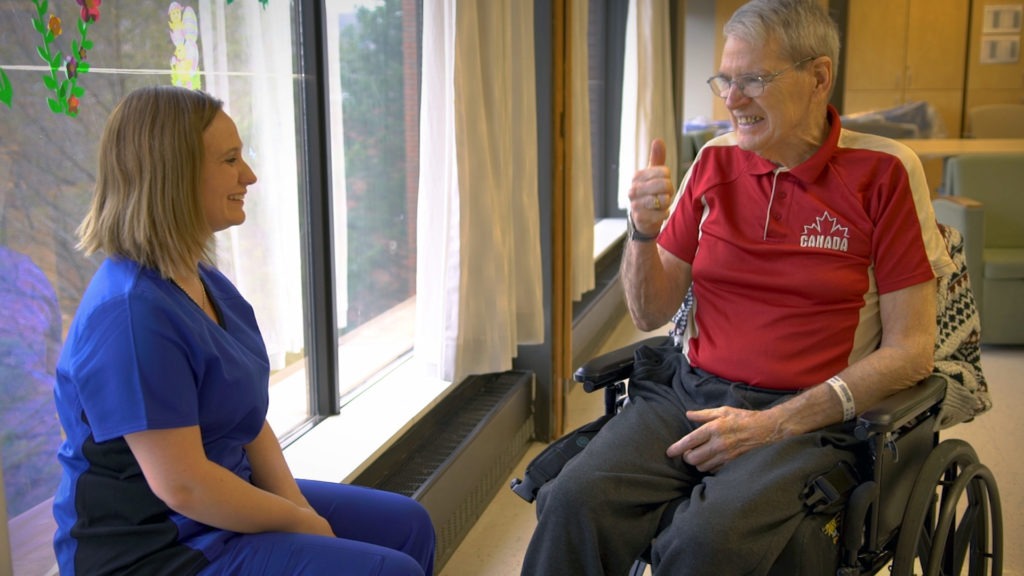
Preventing fractures for an aging population
Fractures from osteoporosis are more common than heart attack, stroke and breast cancer combined. They not only diminish the quality of life of our senior population, but contribute to death within a year. Fractures occur twice as often in long-term care homes than in the community. Therefore, the GERAS Centre for Aging Research of Hamilton Health Sciences and McMaster University, has successfully launched the Fracture Risk Scale (FRS) – an innovative tool for assessing and managing fracture risk in long-term care.
According to Osteoporosis Canada, 85 per cent of residents in long-term care have osteoporosis, which causes bones to weaken and the loss of bone mass. Osteoporosis is irreversible, so once the bones are weakened, bone fractures occur more easily. Preventing a fracture in many cases is about managing osteoporosis and preventing falls.
“we can now begin to anticipate risk before a fracture occurs”
The FRS automatically generates a long-term care resident’s risk of experiencing a fracture. This helps inform the level of fracture prevention and osteoporosis management that should be included in clinical care decisions. This can include any combination of dietary or supplemental calcium, vitamin D, hip protectors, exercise, use of assistive devices, or osteoporosis medications, as well as a thorough review of medications and an environmental assessment.
“While fracture prevention has always been an important goal in long-term care, it has been difficult without a way to accurately identify risk, beyond knowing a resident has experienced a previous fragility fracture,” says Dr. Sid Feldman, Executive Medical Director, Residential Program and Chief of the Department of Family and Community Medicine at Baycrest Health Sciences, home to one of the largest long-term care homes in Ontario. “With FRS we can begin to anticipate risk before a fracture occurs and focus on treating those at high risk.”
The FRS is integrated into the existing assessment system that is widely used in long-term care homes throughout Canada. While in all Ontario long-term homes, the system is mandatory. The assessment is done when a resident is first admitted, then every three months thereafter. While other risk assessment tools exist, this is the first designed and validated specifically for long-term care.
“Making the tool easy and useful for staff will result in greater benefits for residents.”
“Creating the FRS was only one part of the process,” says Dr. Alexandra Papaioannou, executive director of GERAS Centre for Aging Research and geriatrician at Hamilton Health Sciences. “It was equally important to ensure it could integrate into the existing system used by long-term care homes. Making the tool easy and useful for staff will result in greater benefits for residents.”
“In our environment we’re already using data to support our decision-making, so it’s easy to add FRS data,” says Dr. Feldman. “We look forward to seeing how this will begin to benefit our residents.”
GERAS Centre for Aging Research is working closely with the Ontario Association of Residents’ Councils and Family Councils Ontario to improve fracture screening and prevention for older adults in long-term care. They’re also working alongside the Ministry of Health and Long-Term Care, Osteoporosis Canada and additional stakeholders to carry out the Ontario Osteoporosis Strategy – a population-based initiative to improve quality of care for people living with osteoporosis in Ontario. Part of the Strategy specifically aims to reduce hip and other osteoporotic fractures.
